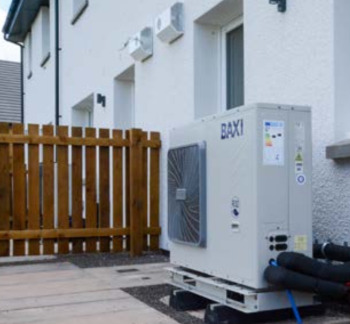Door closer
A door closer is a hydraulic device that is used to automatically close a door after it has been opened. Door closers are commonly used as a fire prevention measure, typically installed on fire doors, as well as helping to prevent draughts.
The most common types of door closer include:
Surface-mounted door closers are the most common type, as they are comparatively cost-effective and easy to install. They are fitted to the door frame behind the door, next to the hinge. The arm of the closer retracts to closed configuration as the door closes.
As well as the standard, double-lever arm, there are different kinds of arms available for surface-mounted door closers, depending on the application and to provide more functionality. These include:
- Hold open arm: By opening the door to a certain degree, a nut is tightened which causes the arm to stick at an open point.
- Dedicated parallel arm: In the closed position it lays parallel with the door instead of projecting outwards, although lacks the strength of the standard arm.
- Stop arm: Prevents the door from opening too far and hitting a wall or other obstacle.
Concealed door closers are hidden within the door jamb and are often used when aesthetics of the door is an important factor. This type fits in the morticed recesses in the door and the frame, allowing it to be completely concealed when the door is closed. This type is typically used for ‘double-acting’ doors, i.e. those that swing both ways; usually in high-traffic applications such as a busy office building door.
Floor closers are similar in that they are concealed within the floor and are not visible when the door is opened. Fitted into the underside of the door is a bar which controls the closing action, usually with an open setting that allows them to be left open. They are typically used with pivot hinges rather than butt hinges, which are stronger and more durable, and can often be found on glass front doors of commercial buildings.
[edit] Related articles on Designing Buildings Wiki
Featured articles and news
Grenfell Tower Principal Contractor Award notice
Tower repair and maintenance contractor announced as demolition contractor.
Passivhaus social homes benefit from heat pump service
Sixteen new homes designed and built to achieve Passivhaus constructed in Dumfries & Galloway.
CABE Publishes Results of 2025 Building Control Survey
Concern over lack of understanding of how roles have changed since the introduction of the BSA 2022.
British Architectural Sculpture 1851-1951
A rich heritage of decorative and figurative sculpture. Book review.
A programme to tackle the lack of diversity.
Independent Building Control review panel
Five members of the newly established, Grenfell Tower Inquiry recommended, panel appointed.
Welsh Recharging Electrical Skills Charter progresses
ECA progressing on the ‘asks’ of the Recharging Electrical Skills Charter at the Senedd in Wales.
A brief history from 1890s to 2020s.
CIOB and CORBON combine forces
To elevate professional standards in Nigeria’s construction industry.
Amendment to the GB Energy Bill welcomed by ECA
Move prevents nationally-owned energy company from investing in solar panels produced by modern slavery.
Gregor Harvie argues that AI is state-sanctioned theft of IP.
Heat pumps, vehicle chargers and heating appliances must be sold with smart functionality.
Experimental AI housing target help for councils
Experimental AI could help councils meet housing targets by digitising records.
New-style degrees set for reformed ARB accreditation
Following the ARB Tomorrow's Architects competency outcomes for Architects.
BSRIA Occupant Wellbeing survey BOW
Occupant satisfaction and wellbeing tool inc. physical environment, indoor facilities, functionality and accessibility.
Preserving, waterproofing and decorating buildings.























